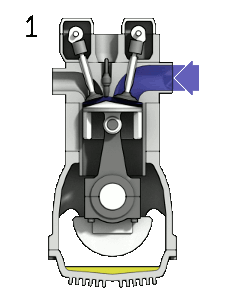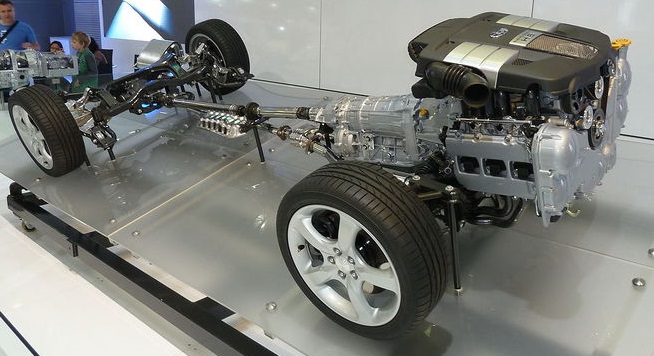Motor vehicle
Energy Education has a number of pages to help one understand the energy science behind their motor vehicles. This page provides a starting point for anyone keen on learning more about cars to pick and choose what interests them. Worldwide, vehicles use a lot of energy - visit transportation energy use for more information.
Types of automobiles
- Internal combustion vehicles (most common type worldwide)
- Hybrid cars
- Electric vehicles
What powers a vehicle?

Most vehicles around the world rely on hydrocarbon combustion of fossil fuels in order to provide power to the rest of the vehicle. Newer technologies allow the use of batteries to power the vehicle. The following pages discuss this process in more detail.
Energy source / Engine type
Specific engine designs
In order to provide ignition, gasoline engines use spark plugs which transform low battery voltage into extremely high voltages in order to provide a spark to the gasoline. Diesel engines use a different technique to do so, as they rely on compression to provide enough pressure to ignite its fuel.
Car parts and power distribution
- see also: drive train
Once energy is transformed from its chemical state contained in the fuel, there are various parts designed to deliver this energy to the wheels.
- Engine block is the strong casing for the engine's cylinders which case the pistons and spark plugs.
- Pistons contain the working fuel, and expand from increased pressures inside their chamber. This expansion provides work to the next component.
- Crankshaft is connected directly to the pistons, and transforms their linear motion into rotational energy.
- Transmission consists of a series of gears, which are rotated by the crankshaft. The driver can select these gears with the selector fork in a manual transmission vehicle to determine the amount of torque to be delivered to the next component.
- Drive shaft is a rotating shaft that delivers the power from the transmission to the wheels.
- Differential is a network of gears that deliver the final power to the wheels. This part allows for the wheels to rotate at different speeds, useful for turning around corners, or providing uneven torque to individual wheels whenever needed.

Energy recovery
In certain vehicles it is practical to recover some of the vehicle's kinetic energy upon braking. These systems include
Other useful pages
References
- ↑ Wikimedia Commons [Online], Available: https://upload.wikimedia.org/wikipedia/commons/d/dc/4StrokeEngine_Ortho_3D_Small.gif
- ↑ Wikimedia Commons [Online], Available: https://upload.wikimedia.org/wikipedia/commons/f/fb/Subaru_Liberty_powertrain_%282010-10-16%29.jpg

